Electric vehicles are more popular than ever – as motorists seek out ways of reducing their car’s running costs (and their own carbon emissions).
However it is not necessarily the case that going electric will save you money in the long run.
What are the current grants available to help people buy electric vehicles?
At the moment there are two grants or reliefs available for someone buying an electric car.
One is a VRT relief, up to the value of €5,000 euro, for cars priced up to €40,000.
Cars priced between €40,000 and €50,000 get a reduced relief – but anything that costs more than €50,000 gets no VRT relief.
The other support is an SEAI grant worth between €2,000-5,000, depending on the price of the car. Though that is not available on cars that cost more than €60,000.
Given the price of most new electric cars at the moment, the majority of buyers are going to get the full €5,000 grant.
But these grants are being cut from the start of July – what's happening?
The SEAI grant is being cut from the start of July.
From that point on it’s going to top out at €3,500 … so a €1,500 reduction on what’s available today.
Doesn’t the Government want people to go electric?
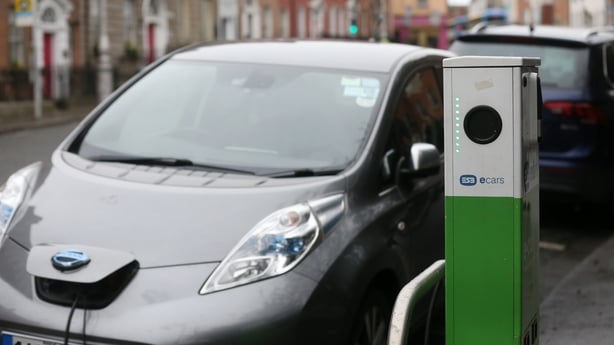
They do – but they say that the best way of doing that now is to shift more of its supports towards infrastructure, rather than the cars themselves.
In other words, it wants to make sure there are enough charging points in the right places around the country, so that all of the people who are buying EVs today are able to actually use them as seamlessly as possible.
There’s also a feeling that when you give bigger grants to electric vehicle owners, you’re really just directing tax revenue to people who are better off.
Because people on low incomes aren’t buying new cars – and they’re certainly not buying new electric cars.
So you end up with a situation where wealthier people are getting grants and tax breaks to reduce their carbon footprint, and their car running costs, while poorer people are left behind.
That’s also the reason why the VRT relief and SEAI grants are structured the way they are. It’s not a good look to be giving tax relief to someone who’s able to spend €100,000 on an electric Porsche or BMW.
There’s also a calculation being made here. The assumption is that a high earner who is looking to buy even a more modest electric car won’t be put off a purchase due to the smaller grant.
As much as they might like an extra €1,500 from the SEAI, if they’re already thinking of spending tens of thousands of euro on a new car, it probably won’t be a deal-breaker either.
The government has also justified its grant cut by pointing out that the current rate was introduced when electric cars were relatively new to the market – and more expensive.
The money was a way of encouraging early adopters to by – and that kind of encouragement isn’t really needed anymore.
They seem to have a have a point, don’t they?
They do – because electric car sales are booming.
There were 15,678 sold last year, according to the Society of the Irish Motor Industry. That means they made up almost 15% of all car sales.
And that doesn’t include hybrids or plug-in hybrids – that’s pure electric cars.
Electric car sales had been growing steadily for the past decade or so – but have really jumped lately.
Last year’s sales were 355% higher than they were in 2019.
And so far this year sales are up about 55% again – the electric car is taking 17.3% of the total market.
At its current rate of growth, there’s every chance that electric will be the second most popular fuel type by next year; overtaking petrol-hybrids and diesel, which are rapidly declining in popularity.
It should be said that some of the most recent jump in sales could be down to people bringing their planned purchase forward in order to avail of the bigger SEAI grant.
So this year’s sales could be getting front-loaded as a result of that – but overall demand still looks to be strong.
A recent survey by Carzone found that more than one third of motorists planned to buy an EV or a hybrid when they were next switching cars.
The majority of those – nearly 60% – said their main reason for doing that was the cheaper running costs.
So can you actually save money by switching from petrol to EV?
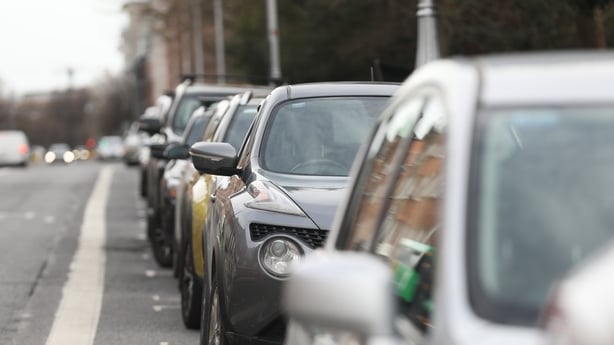
Well electric cars are cheaper to run – but it’s not really clear just yet if you can save money overall by switching.
Generally an electric car is going to cost you a bit more than an equivalent petrol or diesel model.
It’s often hard to make comparisons because they’re different cars – but if you look at some of the manufacturers who offer a choice of an electric or fossil fuel version of the same car, you can get an idea of the premium involved in going electric.
The Opel Corsa is a good example.
The base petrol model costs €23,000 while the electric model costs nearly €35,000 (including the VRT rebate and higher SEAI grant).
So that’s a €12,000 difference.
There are examples where it’s a smaller gap. The basic petrol version of Hyundai’s Kona is €26,000, compared to €32,500 for its basic electric model. But that’s still a €6,500 difference.
What about the cost of a home charger?
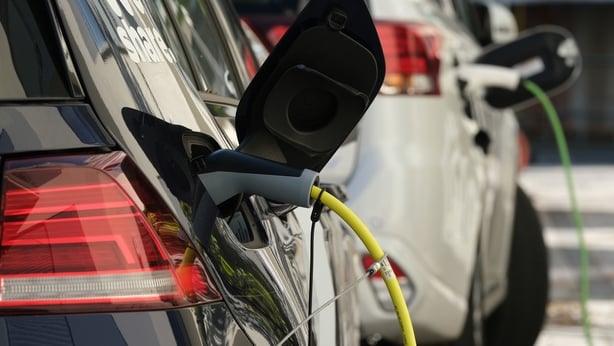
That can be pricey too – most companies quote a price of around €1,200 to have a charger installed.
There is another SEAI grant, worth €600 euro, to go towards that – so that significantly reduces the price.
Still, though, it’s another extra charge you have to add on when you’re weighing up the pros and cons of switching.
And some people may need to check to see if they can even get a home charger installed at all.
People in apartments, for example, will struggle, those who are renting will probably need the okay from their landlord.
Even people who own a house, there might be practical issues. For example those without a driveway or garage might struggle to use a charger in a way that doesn’t cause problems on the public road.
And a home charger is really key if you’re to have any hope of making this investment worth your while.
Because even at the current inflated rates, what you’re being charged at home is a lot less than what is being charged at the public and petrol station chargers.
Never mind the convenience of being able to charge it overnight – rather than having to bring it to a charge point and sit and wait for it to fill up.
So assuming you have the car and a home charger installed – are you saving money now??
Everything about an electric car from this point on should cost you less than a petrol or diesel equivalent.
Motor tax is lower, for a start. It costs €120 a year to tax an electric car.
Most combustion engine cars sold nowadays are in the 'A’ band – which is €140 to €190 a year, depending on the level of emissions.
So that’s maybe a €70 saving a year on tax. Not a lot.
Your maintenance costs should be lower on an electric car too – because it has fewer moving parts than a combustion engine, so there are fewer things that get worn out or go wrong.
But the main area you’re going to see a saving is around fuel.
It is hard to generalise on the difference because the price of petrol and diesel obviously changes from day to day – and electricity prices can change too.
The amount of driving people do – and the type of driving – will also influence how much they need to spend to power their car, and how much they’ll save by going electric
Earlier this year AA Ireland crunched some numbers and found that, on average, an EV car costs around a third less to run than a petrol equivalent.
It reckoned the average petrol driver spent around €2,000 a year on fuel, a diesel driver spent something like €1,700, while an EV driver spent €1,300.
Again, that was based on a certain type of driving, and a certain cost of electricity.
It was also based on a mixture of home and public charging – so if the person was using their home charger all the time they’d save more. But if they were using public chargers all the time, they’d save less.
Taking their figure, though, it means the average EV driver could save €700 a year on fuel. And let’s assume they’re saving €70 a year on tax.
When you compare that to the example of the Corsa – it means you’d have to drive the car for around 16 years before you actually got a return on the extra you paid up-front.
Even with the Kona, where the price difference wasn’t so big, you’re looking at eight a half years before you’ve made back the difference.
So it’s not exactly a quick way to save money?
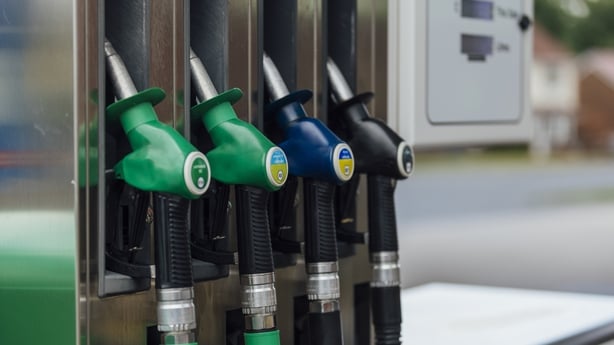
Not really – but of course that can change quite quickly.
Petrol and diesel prices have just gone up because of the reversal in the excise cut, and that will happen twice more before October.
And globally oil producers are working hard to push the price of oil higher, so there’s every chance that fuel prices will rise further in the future.
We also hope electricity prices will start to fall soon, which will mean the gap in running costs will probably be bigger by the end of this year.
And as more people get smart meters, they have the option of signing up to a cheaper overnight rate – so the cost would fall again.
And of course you don’t necessarily need to hold onto your car for a long time in order to recoup your investment.
There is strong demand for EVs on the second hand market and still fairly limited supplies.
At the moment on Carzone there are just over 40,000 used cars listed for sale – with just over 10% of those being electric
So even if you don’t keep your car for 8-15 years, you should make some of your investment back that way too.
How long will it be until electric cars are unequivocally the cheaper option?
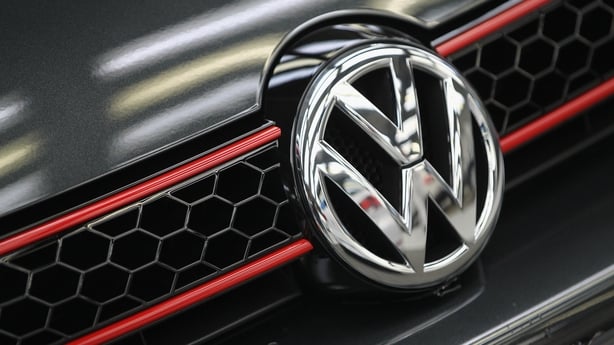
We might not be too far away from that happening.
Anyone who’s watched the EV market in recent years will see how the choice of electric vehicle has exploded.
There were only a handful of options five or six years ago – now pretty much every brand has a couple of electric cars available.
And Ireland isn’t the only country where sales are booming – so that’s pushing production higher and higher each year, and as that happens the cost per unit should start to fall.
The way car-making works is that a lot of money is spent designing the basic frame of a car, or the platform as it’s called, and the engine.
But that’s then used again and again with different shells, different styles and sizes – and these platforms can be used to make new cars for 10 or 20 years.
And that means the cost of coming up with each new iteration is cheaper than the last.
In March Volkswagen unveiled an upcoming EV called the ID2all – it kind of looks like the Polo – and they say it will cost €25,000.
It will probably cost a little more by the time it gets to Ireland, but that’s still in the kind of price range of a small petrol car, especially if you include grants and reliefs.
And Volkswagen are even aiming to launch an electric car at a €20,000 price point in the coming years.
And you can be sure that all the other big manufacturers will follow suit once they get their production up to scale, and it will hopefully start to pull down the price of other models too.
So we’re slowly seeing the up-front price of EVs get closer to the petrol equivalents.
And if everything else about them is already cheaper, it’s at that point that they will be hands-down the best value for drivers.







